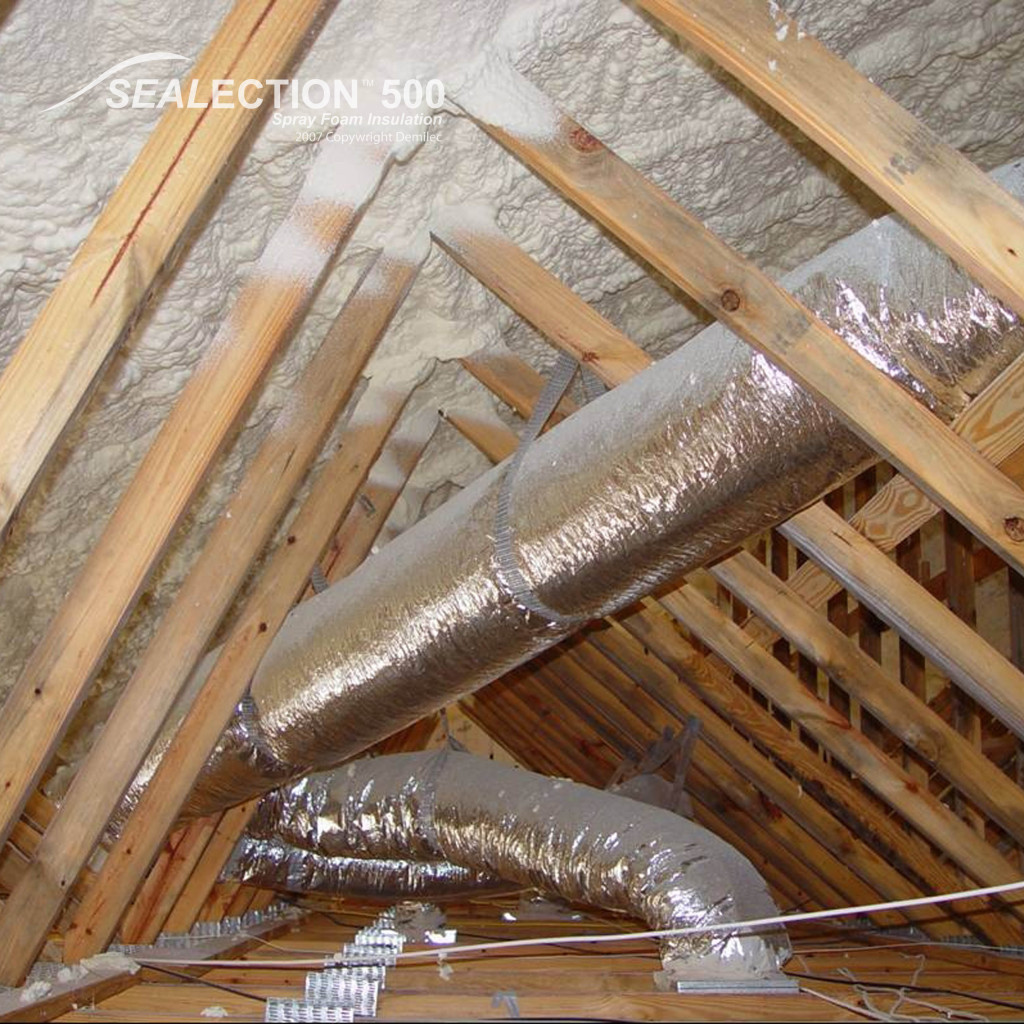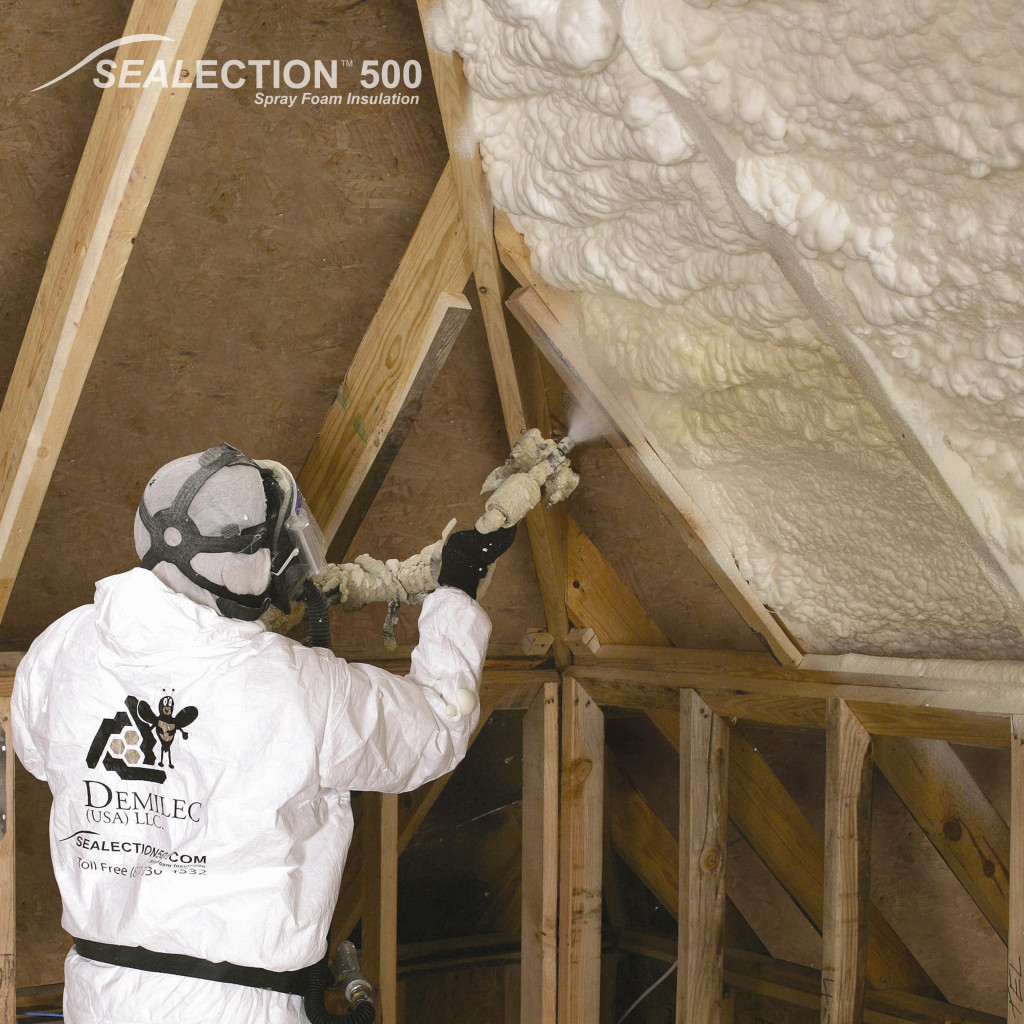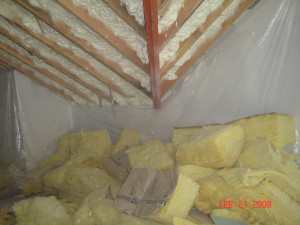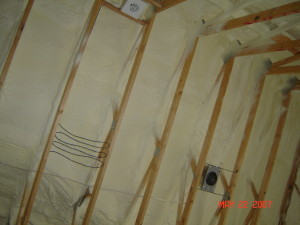Spray Foam for Your Attic Insulation Kansas City: Why It’s a Good Idea to Have a Conditioned Attic Assembly

Most new homes have some kind of duct work or HVAC unit in the attic. What they are likely missing is proper insulation to maximize energy efficiency. If you have an unfinished attic, having it properly insulated could save you 10 to 50 percent on your heating bill. Efficiency is also improved in warmer months; a well-insulated attic will keep your home’s temperature stable, making it easier and less expensive to cool.
From a building science perspective, attics or roofs can be designed and constructed either vented or unvented. In humid climates, there was a school of thought that ventilation would expel hot air and lessen the cooling load. However, when you consider traditional vented attics in warm climates can reach temps of more than 130 degrees, you see this isn’t the case. The temperature difference from the inside of a home (72 degrees) to outside exterior walls during the summer (95 degrees) represents a 23-degree difference. With a vented attic, the temperature difference between the attic (130 degrees) and home interior (72 degrees) is 58 degrees. In this scenario, the cooling unit is actually working harder.

At KC Spray Foam we use Sealection 500 to convert attics into a semi-conditioned space by closing soffits, gable and ridge vents. This reduces the moisture load and can be achieved by moving the insulation from the floor of the attic and applying spray foam insulation to the underside of the roof deck. This prevents moisture-laden outside air from entering the attic and home. Considering the example above, in a conditioned attic the temperature would be closer to the interior temperature of 72 degrees. The roof underside temperature difference would be the same as the exterior wall, reducing the cooling load on the A/C unit.
Another way to think about this: when the duct work is in a vented attic the A/C unit cools the air and pumps it from the 72 degree climate into a 130 degree climate. Since the duct work is usually insulated only to R-6 or R-8, this doesn’t make much sense. You wouldn’t install your duct work and HVAC outside would you? When you put it in a vented attic, this is essentially what you are doing.
In cold climates, attic ventilation has been provided with the thought of maintaining a cold roof to control ice dams from melting snow and to vent moisture from the conditioned space to the attic. However, it also makes good sense to have a conditioned attic in cold climates. Ice damming occurs when warm humid air escapes from a home into the attic, warming the roof underside. This melts the snow on the roof, which refreezes during the night. Installing spray foam insulation on the roof underside air seals and insulates the roof deck, preventing ice damming.
Using spray foam for attic insulation Kansas City will seal out air infiltration and stop convection currents within the insulation for a more energy efficient, healthy and sustainable home.

Common Concerns
One common concern with using spray foam on the roof underside is the shingles will get too hot and melt. Not too worry; they won’t. If you want to learn more about this, check out this building science study that demonstrates that maximum roof sheathing temperature for unvented attics was well within acceptable limits.
Another question often asked is if using spray foam will void the warranty on shingles? It does not. As you can see in this Q&A, a representative from GAF Materials Corp. explains that its shingle warranty is still valid when the shingles are installed over a roof deck insulated with properly installed SPF foam.
Let Us Improve Your Attic Insulation Kansas City

One of the simplest solutions to save money on heating costs (besides turning down the thermostat and pulling on a sweater) is to insulate your attic. If you want to learn more about how we can use spray on insulation to eliminate air infiltration to improve your attic insulation Kansas City and cut utility bills, give us a call today!
About the author
Mark grew up in Winterset, Iowa: the birthplace of John Wayne and the home of Madison County Covered Bridges. He lived on a small acreage where they raised cattle, sheep, and chickens. During his youth, he raised and showed cattle with the local 4H program.
Mark’s first paying job was working at the local lumberyard after school and on weekends. After he graduated from Winterset High School he pursued the agricultural field by working on a large farming operation eventually working his way up to the manger position and partner. He also had a long career in the transportation industry.
Mark continues to own and oversee the operations of Iowa Spray Foam in addition to KC Spray Foam & Coatings.
Mark resides in Lee’s Summit, MO with his wife Tina and three of their four children. Their oldest lives and works in the Kansas City area as well.